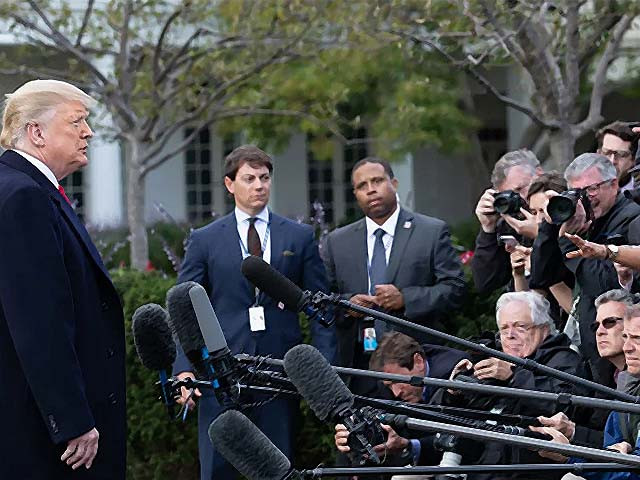As the Trump presidency recedes day by day and week by week into the past, I still find myself very anxious as I open up the news each morning. I still expect to see more nonsense from the White House. In reality it’s been, dare I say, quiet and boring? Relatively speaking, of course.
Former President Donald Trump was truly a personality made for the 24-hour news cycle. He never stopped tweeting his thoughts (until Twitter had enough of him), ad-libbing speeches, firing up the faithful at MAGA rallies or having his spokespeople parrot his words. In truth, Trump did really well at communicating solely through the channels he controlled. When he did consent to a media interview, it was often with friendly media outlets. Other media interviews often turned adversarial. He also held open contempt for the media sources he identified as the enemy of the people.
But, don’t mistake Trump for some sort of groundbreaker of message control. American politicians have been doing this for ages. A very simple way for a politician to get both their supporters emotionally invested in their views and to get media attention is to keep their message simple. Namely, an “us vs. them” rhetoric. One can also call it “good guys vs. the bad guys”, “cowboys vs. Indians” or “cops vs. robbers”. Whatever the name, there are only two recognised sides: the “correct” and the “other side” that opposes all that is correct. Examples of the “other” in US politics are “the radical left” and the “the far right”. In the Trump era, the terms “the socialists” and “the white supremacists” also became popular and so on. It’s so easy to cast yourself as a voice of reason/justice/fairness when comparing yourself to a radical or dangerous villain!
The media, in the business of keeping the attention of their viewers for as long as possible, will eat up this rhetoric because it causes emotional reactions. If they do it right, the media will not upset viewers so much that they will change the channel or choose another website. Rather, they’ll stay engaged with what happens next and who gets the better of whom. It plays out like a soap opera, in other words.
The US media, especially television and radio, feel they need to entertain while they inform. It’s just their nature. A US news media consumer primarily witnesses the extreme ends of the political spectrum facing off against each other. Some may call that “balanced coverage” or “equal time” because they both extremes are given time and space. But it’s less about sharing information and more just opinionating. But, that’s where the action (the entertainment) is for the media. You watch and listen to representatives from either of those extremes fling verbal bombs back and forth at each other and you get upset, angry, supportive, disgusted but you keep watching to see what will happen next.
Covering “us vs. them” rhetoric is also like watching another sport. Plus, this “sport” has a year-long season as long as there are politicians willing to talk into a microphone. To be honest, I don’t know which came first: the multi-headed media monster that gobbles up simplistic storylines from politicians or the politicians talking down to the public (via the media) about the complexity of running a democratic government.
Being a rational and analytical voter doesn’t mean I’m devoid of emotions playing a role in my decisions. For example, being hopeful or afraid isn’t a weakness or a sign you’ve been fooled by a politician. However, I try to not to let myself take the bait of fear-based rhetoric from either political extreme. I try to take a deep breath to let the emotions subside and allow my curiosity to take its place: why is that person or political party trying to strike fear into people? Is it an alarm to be fearful of a threat or are they trying to distract me from another issue? The emotions of hope, fear and love have always driven political rhetoric. It’s what gets people to register to vote, into the streets to protest and watching the 24-hour news cycle, including all those commercials that pay the salaries of the journalists. Those emotions just also happen to be what sells books, movie tickets and streaming services.
To see politics from the grey area between the extremes takes time, energy, patience plus the ability to listen to someone else and to respect their right to speak their mind. Don’t get me wrong, that doesn’t mean that I respect their view or even them. But, they should enjoy the right of expression.
No presidential administration has ever been above political maneuvering, games and attempts to manipulate popular opinion. Each elected administration in any phase of its power, whether freshly elected or on its way out as a “lame duck”, is always pushing their views and policies via the rhetoric that gets the headlines. As long as politicians run government, this is what happens.
But, was the Trump style of rhetoric just another “day at the office” for political rhetoric, games and maneuvering or are we seeing a deterioration of democracy itself?



COMMENTS
Comments are moderated and generally will be posted if they are on-topic and not abusive.
For more information, please see our Comments FAQ